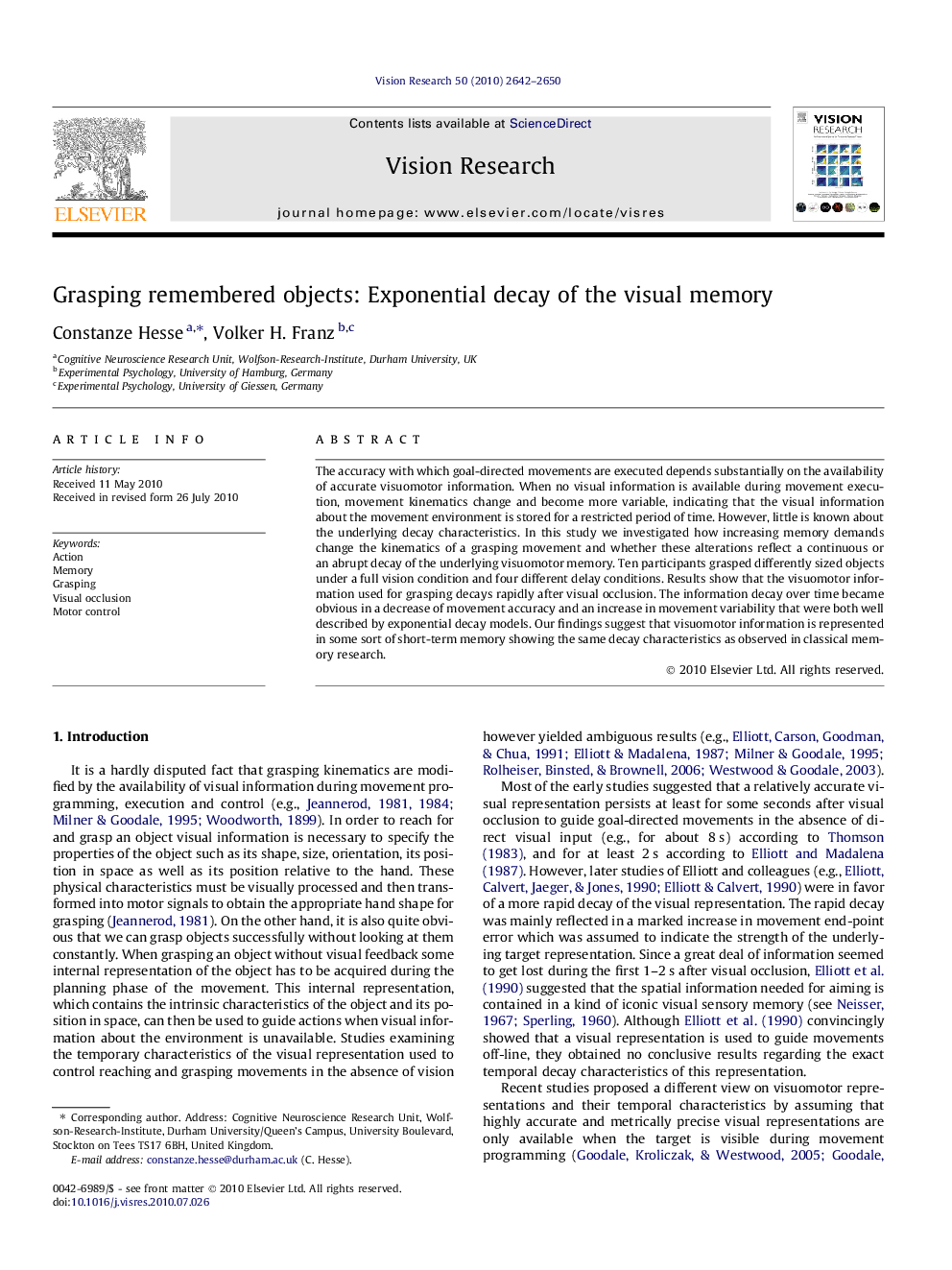| Article ID | Journal | Published Year | Pages | File Type |
|---|---|---|---|---|
| 4034218 | Vision Research | 2010 | 9 Pages |
The accuracy with which goal-directed movements are executed depends substantially on the availability of accurate visuomotor information. When no visual information is available during movement execution, movement kinematics change and become more variable, indicating that the visual information about the movement environment is stored for a restricted period of time. However, little is known about the underlying decay characteristics. In this study we investigated how increasing memory demands change the kinematics of a grasping movement and whether these alterations reflect a continuous or an abrupt decay of the underlying visuomotor memory. Ten participants grasped differently sized objects under a full vision condition and four different delay conditions. Results show that the visuomotor information used for grasping decays rapidly after visual occlusion. The information decay over time became obvious in a decrease of movement accuracy and an increase in movement variability that were both well described by exponential decay models. Our findings suggest that visuomotor information is represented in some sort of short-term memory showing the same decay characteristics as observed in classical memory research.
